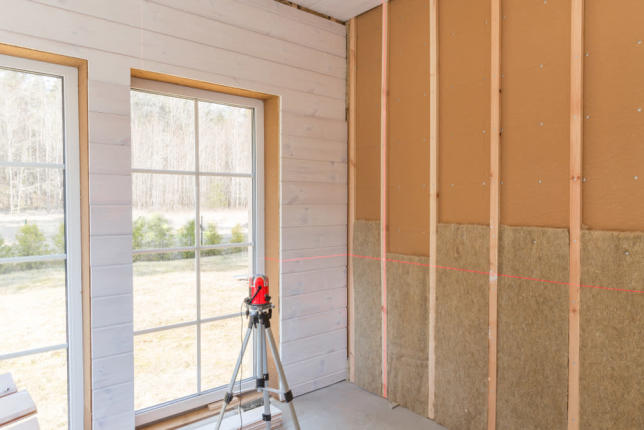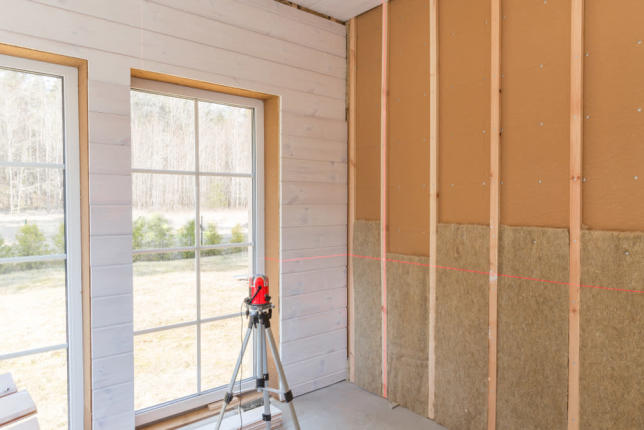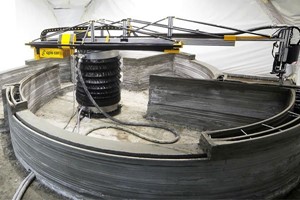What Is Hemp Insulation?
Hemp is first grown and cultivated in a wide variety of climatic conditions. It's a plant with a fast yield, reaching maturity in 90-120 days. Hemp insulation comes in the form of batts made from the inner fibrous layer of the hemp plant. The insulation can be intertwined with flax, polyester, or kenaf fibers that help act as a binder. Hemp insulation is a dense type of batting that's not as flexible as sheep and mineral wool. Another insulation type made from hemp is hempcrete.
Are There Concerns Related to the Production of Hemp Insulation?
How hemp is grown can be a potential concern. Agriculture methods can vary in their environmental impacts and their ability to regenerate soils or degrade them. Generally, though, hemp requires no pesticides or insecticides. It consumes very little water, which results in a lower environmental footprint to cultivate.
How Thick Should Hemp Insulation Be?
You can install hemp insulation in any thickness you need. The batt sizes come standard to fit 2x4 and 2x6 wall cavities for 16 or 24" stud centers. Typical thicknesses available include 3.5, 5.5, and 8 inches. You can stack these on each other if you want to go even thicker.
Where Can You Use Hemp Insulation?
Hemp insulation can be used in building systems from inner walls, exterior walls, ceilings, and attics. Its higher density allows it to be used as external wall insulation before siding installation. Hemp insulation is not a load-bearing product, so use it accordingly in floor insulation applications. Its vapor permeability is key to its wide array of uses in wall assemblies and adaptability to every type of environment.
How Long Does Hemp Insulation Last?
Hemp insulation is a durable and resilient product that can last the life of the building.
Is Hemp Insulation Environmentally Friendly?
Hemp's long history is a testament to its sustainability potential. Hemp's lifecycle is very supportive of a planet-friendly status. It's a renewable resource that builds soil and supports a diversity of life within the earth if grown sustainably. Resilient performance during its long lifespan allows it to be used in a wide array of building systems. At the end of its life, it can, and should, be re-used for another application, recycled, or composted, and allowed to decompose back into the soil.
Is Hemp Insulation Healthy?
Hemp insulation is non-toxic. It is a plant-based product that contains no VOCs, no chemical binders, and does not off-gas. Hemp insulation is hypoallergenic, repellent to mold, pests, and insects. Compare this to petroleum-based foams that can off-gas or itchy and messy fiberglass insulation.
How Do You Install Hemp Insulation?
Hemp insulation is a DIY-friendly installation material. Since its non-toxic, the necessary PPE is minimal, and it does not itch as fiberglass batting can.
Hemp insulation is very dense. You can't just cut it with a utility knife; use a miter saw, circular table, or hand saw to cut it. When you measure, it's better to measure long than short – add ½" to cavity measurement for a snug, friction fit.
You can use insulation hangers or even rope to keep it supported between the framing members before panel installation for overhangs. If you want to stick with the theme, choose hemp twine for this purpose!
How Do You Remove Hemp Insulation?
Hemp insulation is straightforward to remove after you remove the interior paneling, typically drywall. Even though it's completely non-toxic, it's still recommended to wear essential PPE such as long sleeves, safety glasses, and a dust mask. This step isn't really for the hemp insulation, but for whatever other building material dust could be lurking in an old wall cavity.
How Do You Dispose of Hemp Insulation?
Don't disrespect the very nature of hemp itself and send this natural material to a landfill! Recycle it or compost it. You can even use it as a vegetation barrier or weed block in your yard or garden, where it will eventually become plant fertilizer as it breaks down. Or you could think of another innovative use of which there are endless options. Hemp deserves to be returned to where it started its life - in the soil, amongst an incredible diversity of microbes, bacteria, and fungi to return to the earth and feed the next generation of lifeforms.
Tom Saxton













